|
In Sydney, the Caterpillars of this species are a particular pest on:
Geranium (Pelargonium x zonale,
GERANIACEAE),
which they attack by sitting with their hind pairs of legs on the stem
under a leaf, and swinging around chewing a piece out of each of the veins
under the leaf, causing the leaf to collapse umbrella-like around them.
|
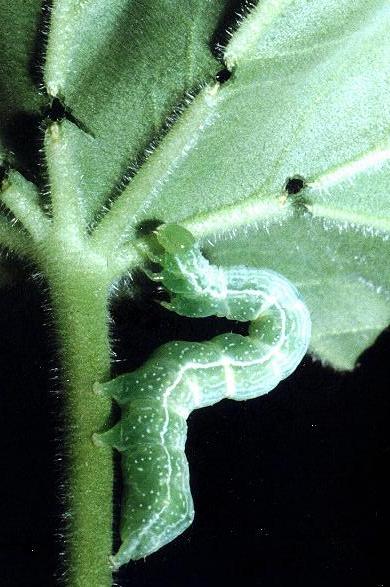
(Photo: Don Herbison-Evans, Concord, New South Wales)
|
The caterpillars also
attack many other garden plants, including:
Dahlia (Dahlia pinnata,
ASTERACEAE),
Beans (Phaseolus vulgaris,
FABACEAE),
Spearmint (Mentha spicata,
LAMIACEAE),
the young shoots and fruit of
various types of Citrus: e.g. Lemon, Orange,
(
RUTACEAE), and
Tomato (Lycopersicum esculentum,
SOLANACEAE).
They have also been found feeding on weeds, such as:
Cobblers Pegs ( Bidens pilosa,
ASTERACEAE ).
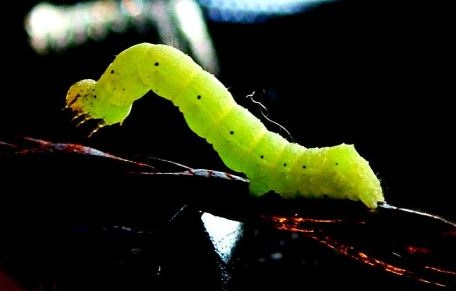
(Photo: courtesy of
Boris Branwhite, Central Coast, New South Wales)
The larvae are green with a number of faint white
lines along the animal's length.
They also sometimes have black dots along the sides.
Some of their ventral
prolegs
are missing and this makes them move looper fashion,
like the caterpillars of
GEOMETRIDAE.
The caterpillars grow to a length of about 4 cms.
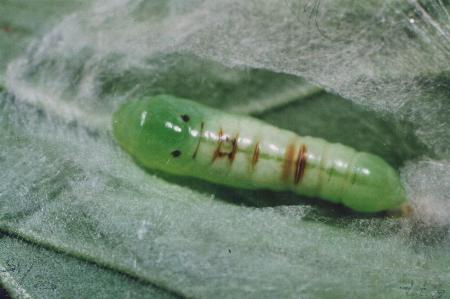
(Photo: Don Herbison-Evans, Concord, New South Wales)
The pupa is formed under a curled leaf of the foodplant
in a sparse cocoon. It is green,
often with brown markings which often curiously resemble a face.
Pupal duration varies from about a fortnight in summer
to about a month in winter.

(Photo: courtesy of Steven Dodge, Nowra, New South Wales)
The adult moth has black, white, brown and gold forewings,
each with complex pattern
including an image like a dripping liquid near the middle.
The pattern also looks like it is three-dimensional,
one part casting a shadow on the rest.
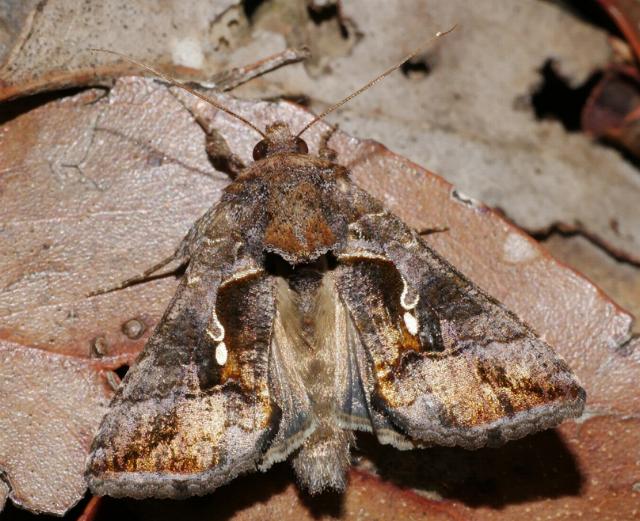
showing 3D optical illusion
(Photo: courtesy of
Cathy Powers, Brisbane Ranges, Victoria)
The hindwings are pale brown darkening toward the margins,
with rusty brown veins.
The moths have a wingspan of about 3 cms.
The moths can erect the scales behind the head which then
look like a big pair of ears.
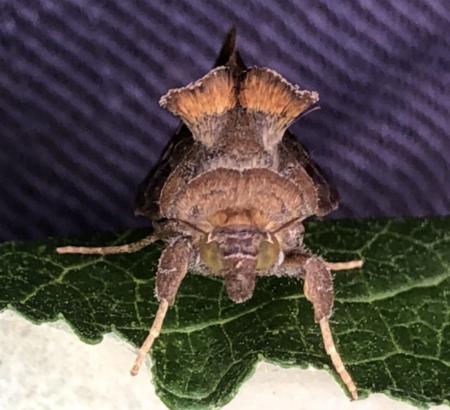
full frontal
(Photo: courtesy of Steven Dodge, Nowra, New South Wales)
Males have long orange hair-like scales on either side
of the abdomen, which are distinctive for this species,
and these are the origin of the scientific name,
as in Greek, erith = red, and soma = body.
The absence of a tiny silver 's' on the forewings distinguishes
it from related species:
Chrysodeixis argentifera.
The separated central droplet distinguishes it from related species:
Chrysodeixis subsidens
which appears to have a similar teardrop forming,
but which is still attached to its apparent source.
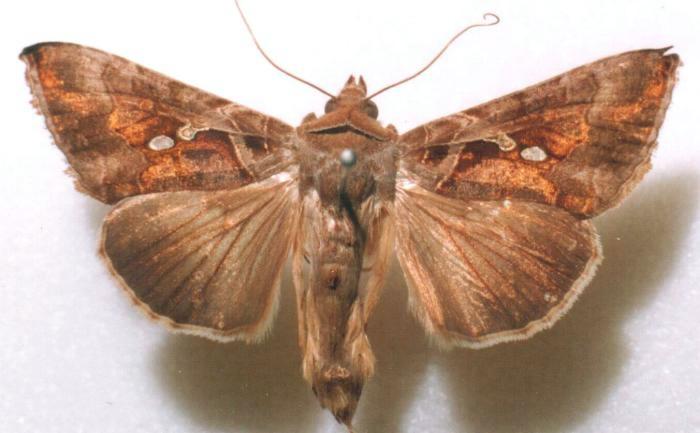
(Specimen: courtesy of the
Macleay Collection, Chau Chak Wing Museum, University of Sydney)
The species occurs throughout the tropical and subtropical regions
of eastern Asia and the Pacific islands including :
Borneo,
Hawaii,
Hong Kong,
India,
New Zealand,
Papua,
Tonga,
and also in Australia in
Western Australia,
Northern Territory,
Queensland,
New South Wales
Australian Capital Territory,
Victoria,
Tasmania, and
South Australia.
and possibly imported accidentally into
United Kingdom.
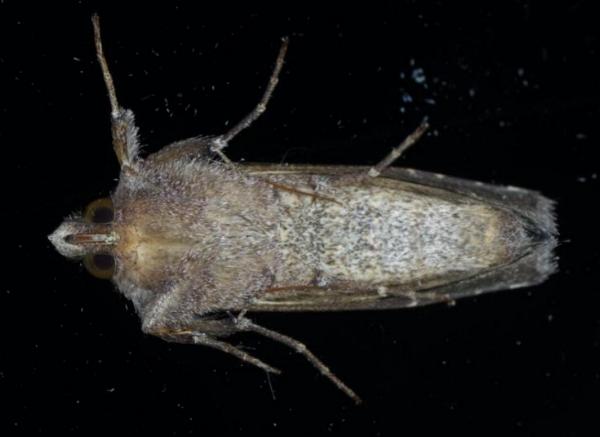
underside
(Photo: courtesy of
John Bromilow,
Ainslie, Australian Capital Territory)
Further reading :
W.L. Butler,
Trans. New Zealand Inst.,
Volume 13 (1881), p. 238.
Ian F.B. Common,
Moths of Australia,
Melbourne University Press, 1990, pl. 22.2, pp. 65, 460.
Pat and Mike Coupar,
Flying Colours,
New South Wales University Press, Sydney 1992, p. 67.
Edward Doubleday,
with Adam White :
List of the annulose animals hitherto recorded as found in
New Zealand with descriptions of some new species,
in: Ernest Dieffenbach : Travels in New Zealand,
John Murray, London 1843, Volume 2, p. 285, No. 117.
Peter B. McQuillan, Jan A. Forrest, David Keane, & Roger Grund,
Caterpillars, moths, and their plants of Southern Australia,
Butterfly Conservation South Australia Inc., Adelaide (2019), p. 170.
Peter Marriott & Marilyn Hewish
Moths of Victoria - Part 9,
Cutworms and Allies - NOCTUOIDEA (C),
Entomological Society of Victoria, 2020, pp. 6-9.
Buck Richardson,
Tropical Queensland Wildlife from Dusk to Dawn Science and Art,
LeapFrogOz, Kuranda, 2015, p. 166.
Mrs. E.M. Swainson,
quoting Harrison G. Dyar & T.D.A. Cockerell,
Notes on Lepidopterous Larvae from Jamaica,
Journal of the New York Entomological Society,
Volume 9 (1901), pp. 81-82.
(written 12 August 1996, updated 22 November 2025)













